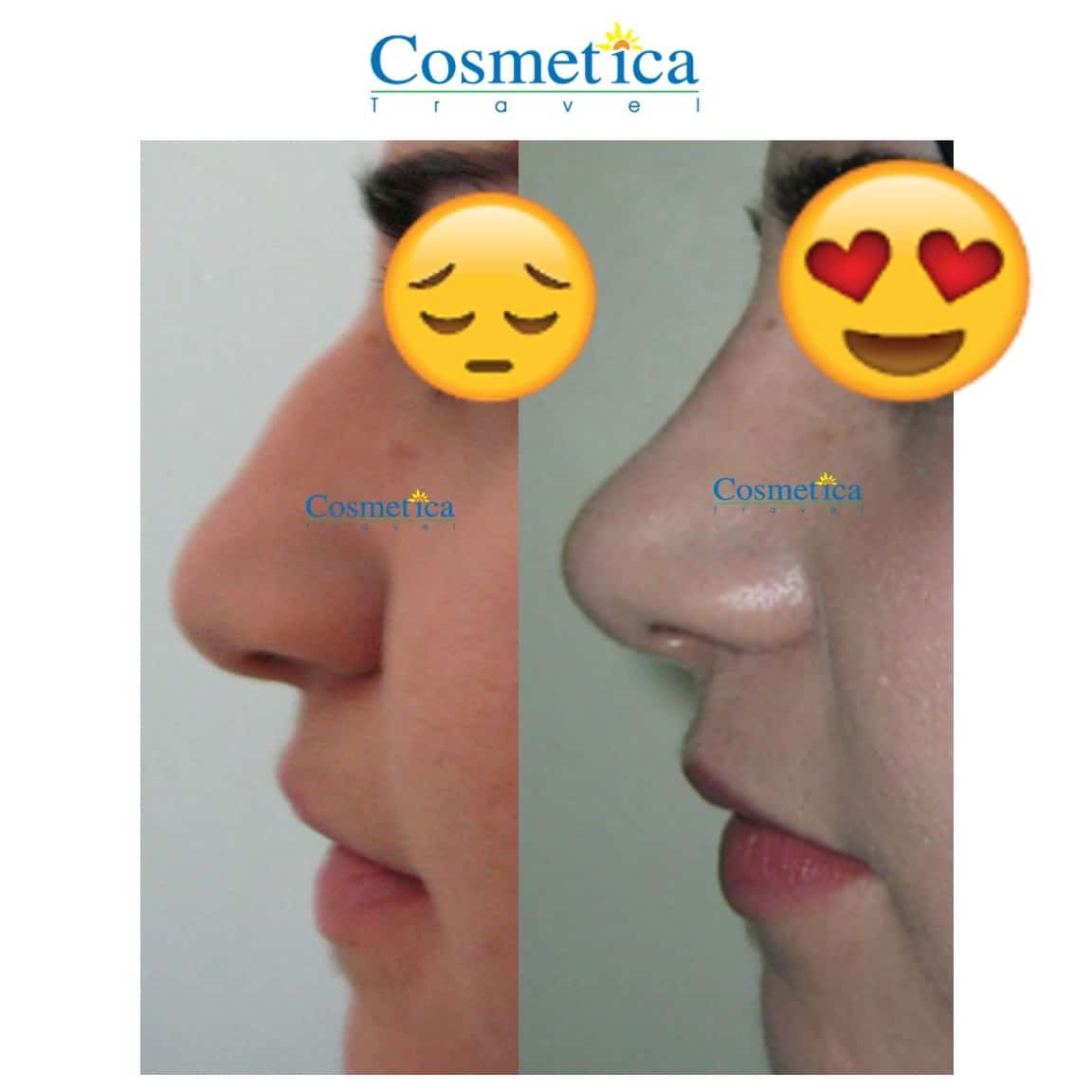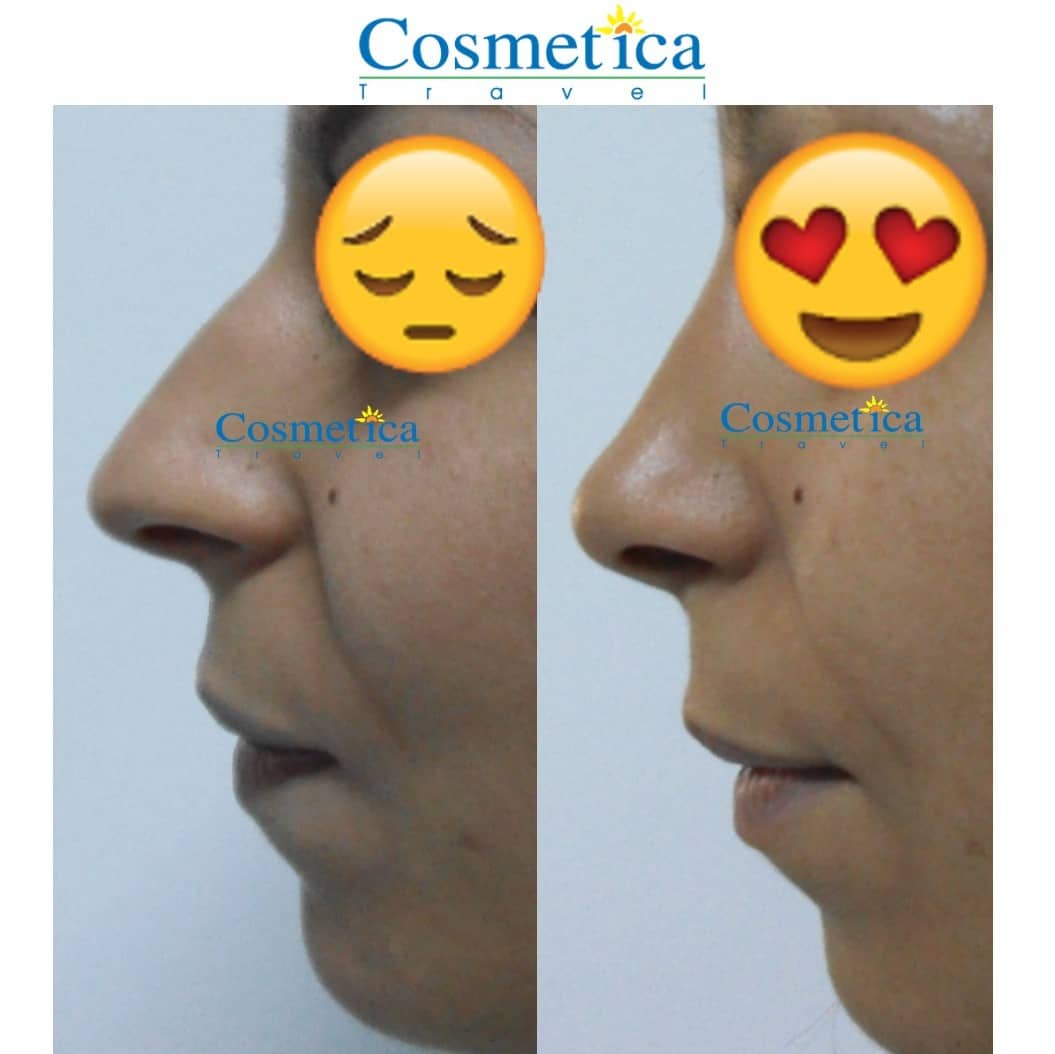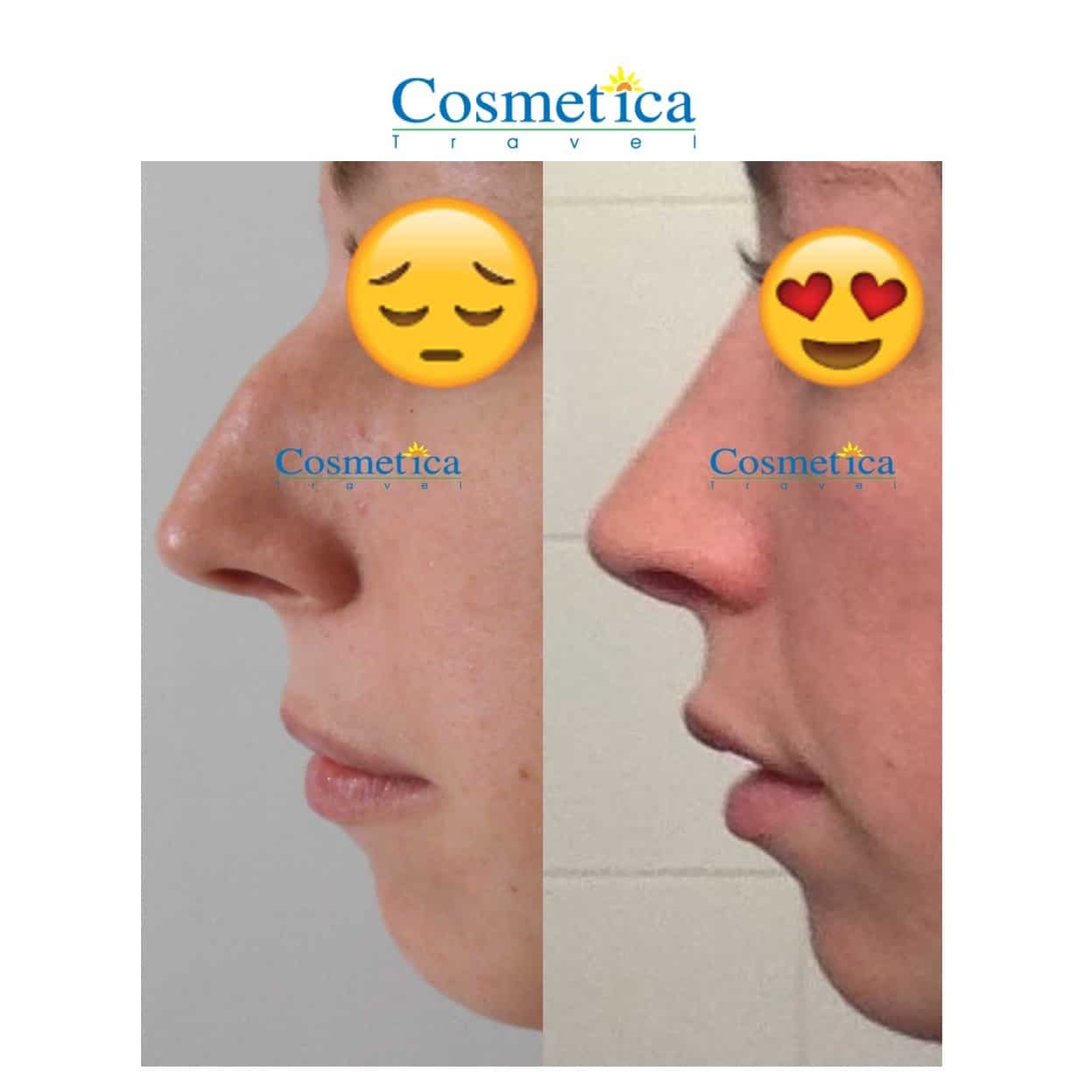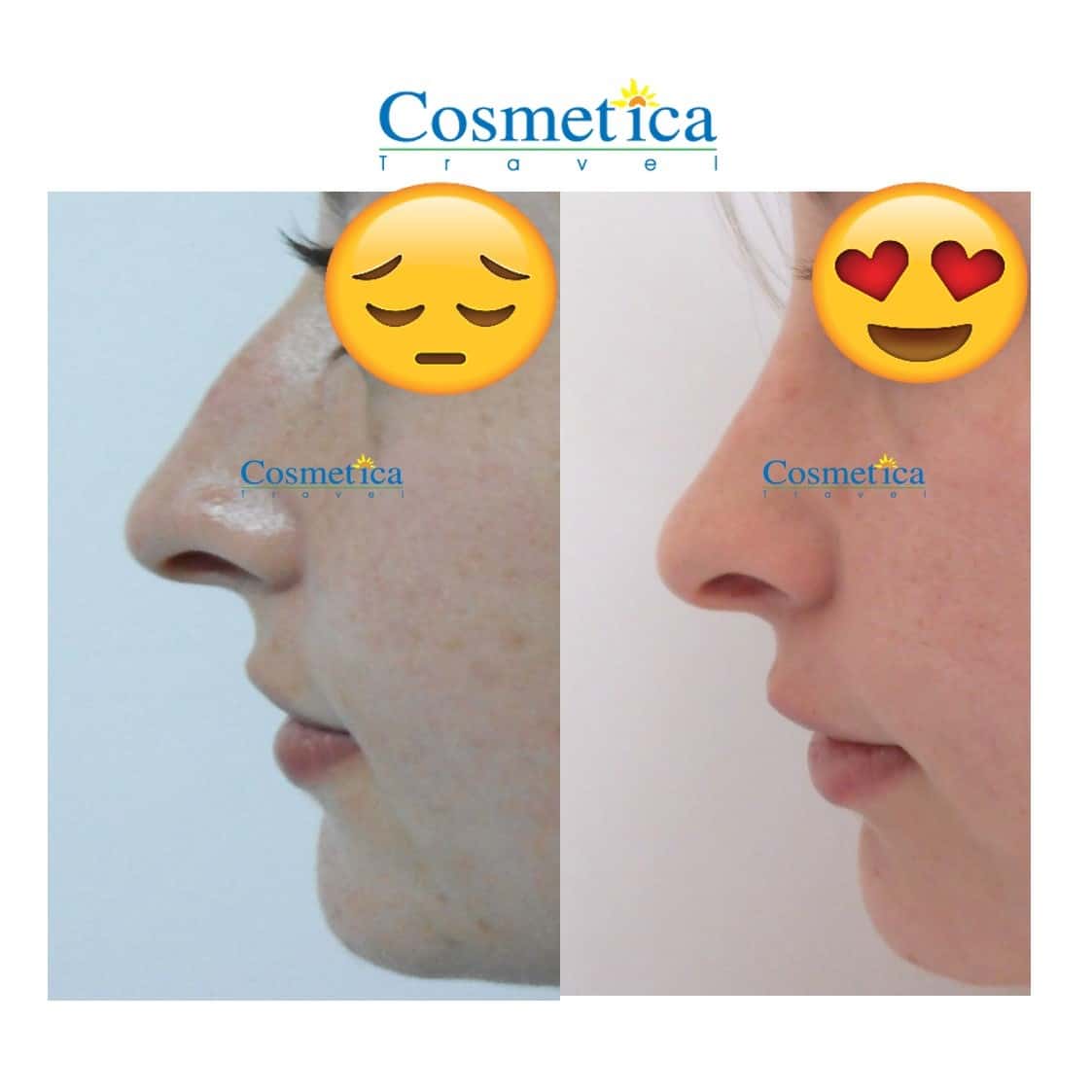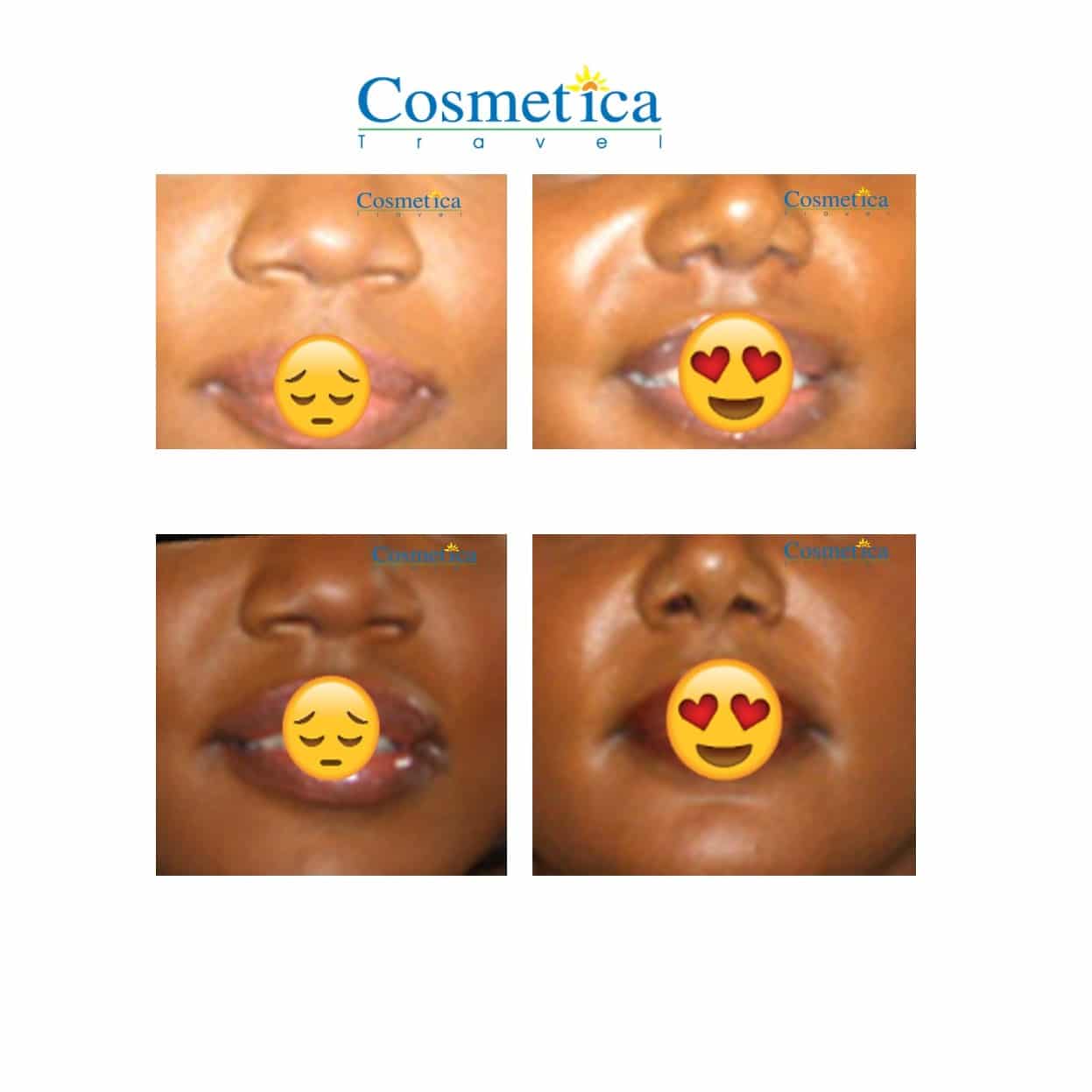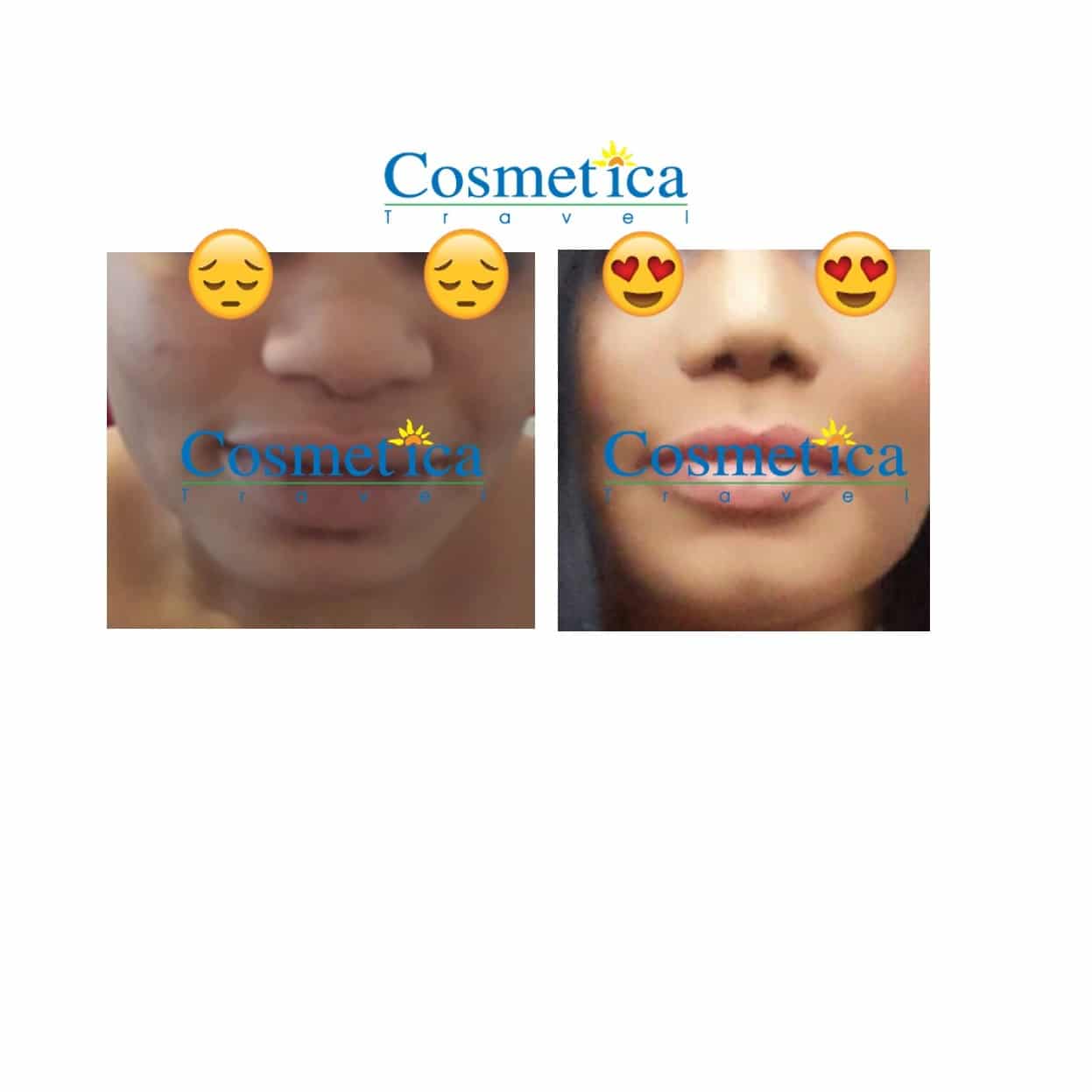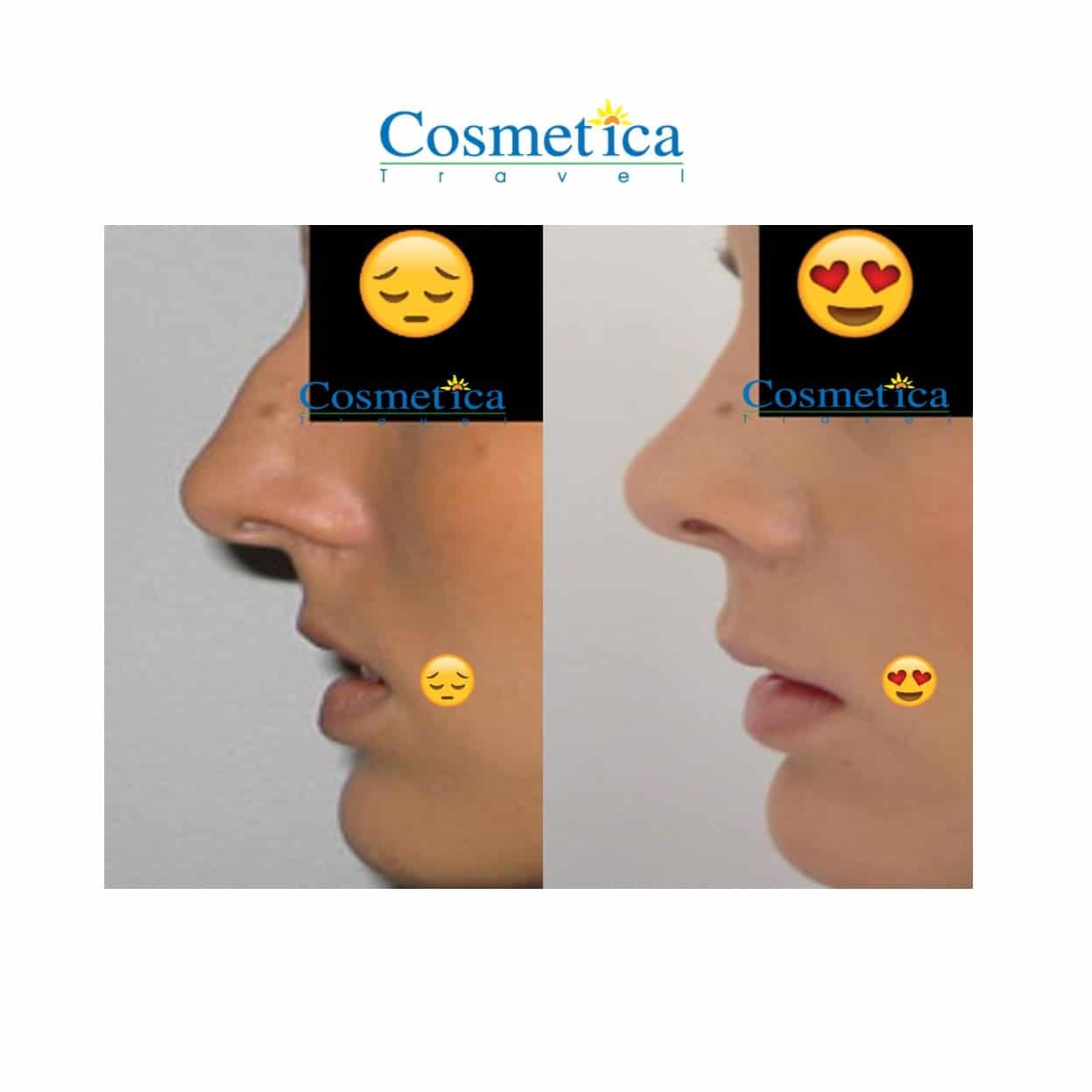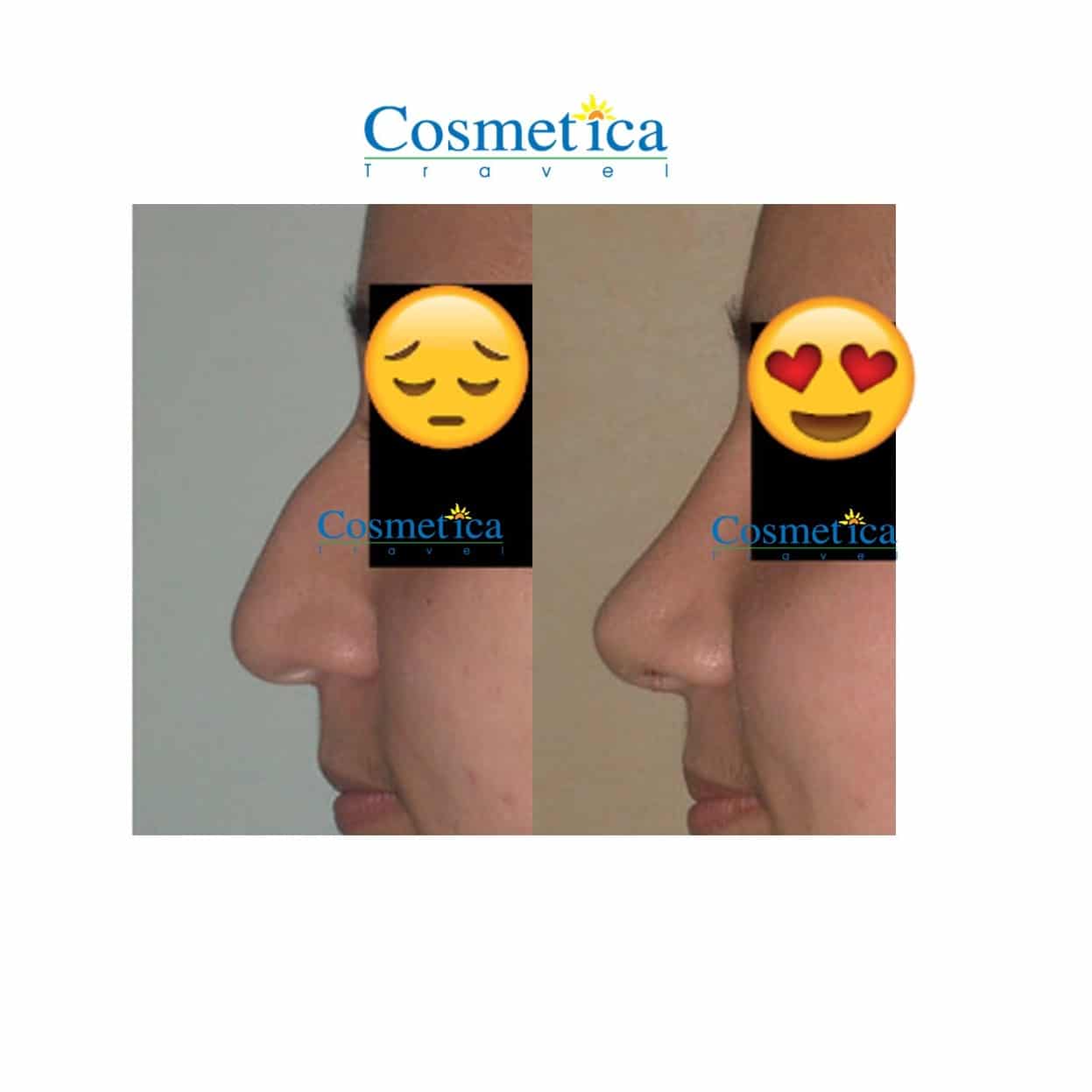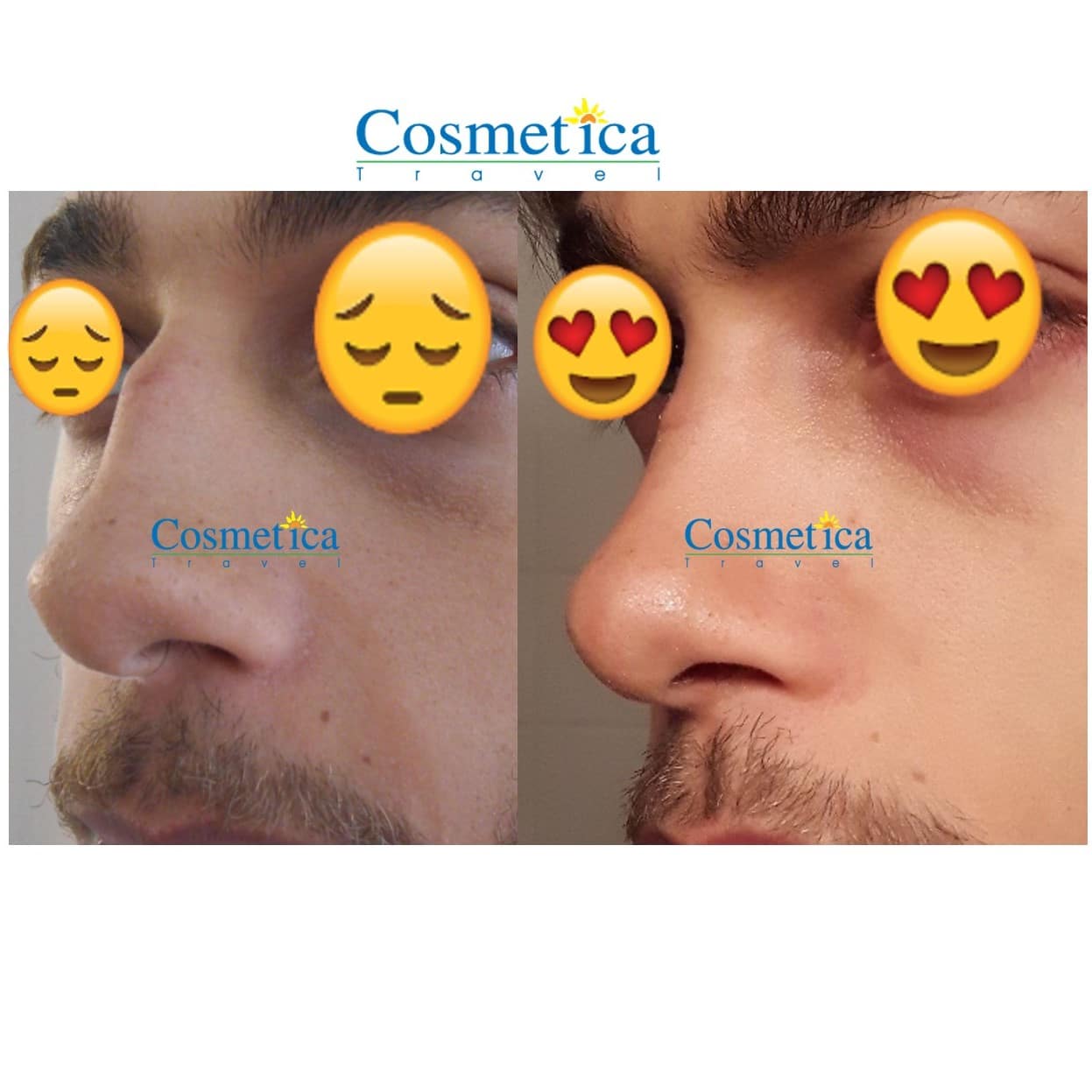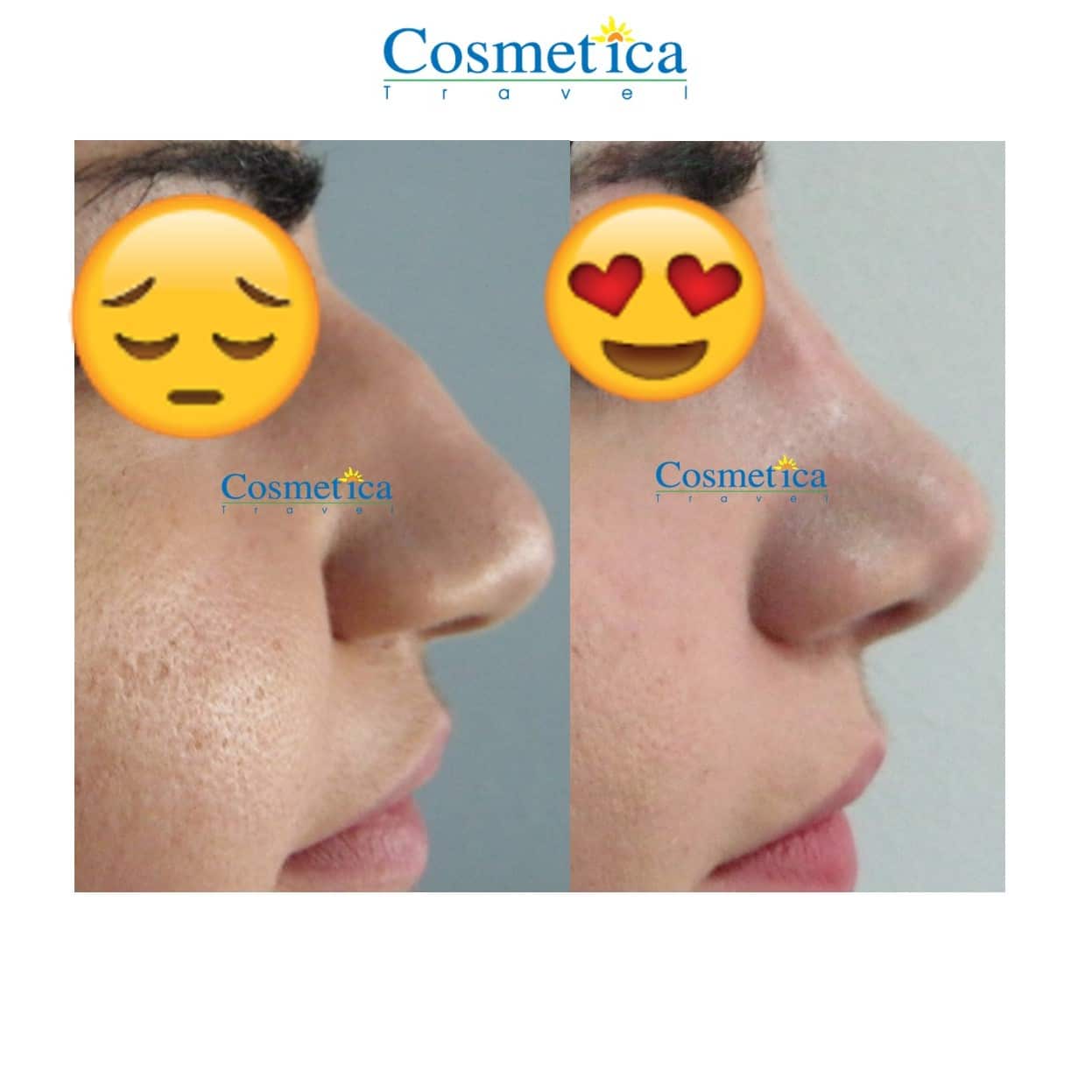Rhinoplasty: what is it?
The nose is central to facial balance and harmony. Indeed, studies have found that when addressing a person, the first noticeable facial feature upon which one focuses is the nose. For this reason, rhinoplasty, commonly known as nose job, has been exceedingly requested and performed during the last decades.
Rhinoplasty is a plastic surgery that reshapes the nose and corrects nasal dysfunctionalities or deformities. It guarantees natural-looking results that are adapted to the patient’s facial structure. The objectives of the procedure vary according to the needs of the patient and the desired outcomes:
- Removing an unpleasant bump
- Reducing the size of the nose
- Refining the tip
- Improving breathing
People may be aesthetically, medically, or functionally motivated in seeking out nose surgery:
- Aesthetic motivation: people who dislike the size, shape, or proportions of their nose and wish to improve its appearance may undergo a rhinoplasty.
- Medical motivation: people can seek out a rhinoplasty to correct nose defects or imperfections caused by an injury.
- Functional motivation: people may consider rhinoplasty if they suffer from breathing difficulties relating to nasal airways.
In the case of cosmetic rhinoplasty, good candidates are those whose nasal bone is fully-grown. Nasal bone growth is generally reached at the age of fifteen (15) for girls and seventeen (17) for boys. Nose defects and breathing dysfunctionalities may be treated at a younger age. In addition, patients should be in good overall health.
Rhinoplasty cost in Tunisia:
The cost of rhinoplasty in Tunisia is 70% lesser than in the United Kingdom.
| Operations | Our price | UK price | Making you save |
|---|---|---|---|
| Full rhinoplasty cost | £ 2150 | £ 5857 | 65 % |
| Ethnic rhinoplasty cost | £ 2250 | £ 6143 | 65 % |
The average pricing in the United Kingdom is £ 5857; solely including anaesthesia, operating room facilities, and surgeon’s fees.
The cost of rhinoplasty in Tunisia is £ 2150; all-inclusive with a recovery stay at a five-star hotel, a chance to explore our exotic Tunisia, and a dedicated assistance team by your side.
It is all the same important to note that the low pricing of medical stay in Tunisia is due to the cheaper cost of living, the currency exchange rate, tax laws, and lower insurance cost payment on the part of Tunisian doctors.
Rhinoplasty in Tunisia
| Operations | Anaesthetic | Procedure Time | Hospital Stay | Stay In Tunisia | Back To Work | All Inclusive Price |
|---|---|---|---|---|---|---|
| Full rhinoplasty | General | 1-3 hour(s) | 1 night(s) | 6 night(s) | 7-14 day(s) | 2150 € |
| Ethnic rhinoplasty | General | 1-3 hour(s) | 1 night(s) | 6 night(s) | 7-14 day(s) | 2250 € |
How is rhinoplasty performed?
Before nose job surgery
During the pre-op consultation, the surgeon will discuss with the patient their expectations and motivations and will make sure that the patient is fully aware of the consequences and possible complications of the procedure.
The surgeon will look into the patient’s medical history, perform physical examinations and take photographs of the patient’s nose to decide on the procedure to follow (corrective rhinoplasty, functional rhinoplasty, or both). The patient will need to be conscious of the significant post-surgical changes brought by rhinoplasty. A medical check-up and a blood test are required
During nose job surgery
Rhinoplasty is performed under general anaesthesia on an outpatient basis and is estimated to last for two to three hours.
Step 1: Two types of incisions can be performed during nose surgery; each of which depends on the operated area(s):
- Closed rhinoplasty: incisions are made within the nostrils, which helps conceal post-surgical scars and swelling.
- Open rhinoplasty: incisions are made in the vertical strip of skin separating the nostrils (the columella).
Step 2: Once the incision is made, the surgeon proceeds to the reshaping of nasal structure. Depending on the patient’s desired outcome, the surgeon may either:
- Reduce the size of the nose (nose reduction): cartilage and/or bone will be removed to lessen the size of the nose.
- Increase the size of the nose (nose augmentation): cartilage graft is taken from the patient’s nasal septum, ear, or rib can be considered along with the placement of silicone implants.
Step 3: The surgeon will conclude the procedure by suturing the incisions and placing a plastic or metal splint on the patient’s nose. The splint will help the nose retain its new shape during the healing process.
Post-operative effects & recovery after nose plastic surgery:
- Following surgery, mild to moderate pain is expected. For this, the surgeon will prescribe the appropriate medication to alleviate the pain and render the healing process easier.
- The patient may as well experience breathing difficulties for a few weeks after the procedure.
- Bruising and swelling are expected, but both will fade away after a few weeks.
- The splint should remain in place for one week at least. It will be removed after 10 days along with the stitches.
- Strenuous activities (like practicing sports) should be avoided, and can only be resumed after a few weeks.
- The patient is advised to take two weeks off work to promote proper healing of the nose.
Results of rhinoplasty:
The end result of nose surgery is not immediately appreciated and can take several months or even a year to be visible.
Learn more about plastic and cosmetic face surgery procedures:


